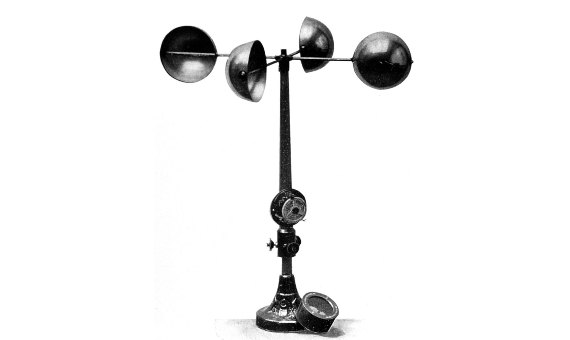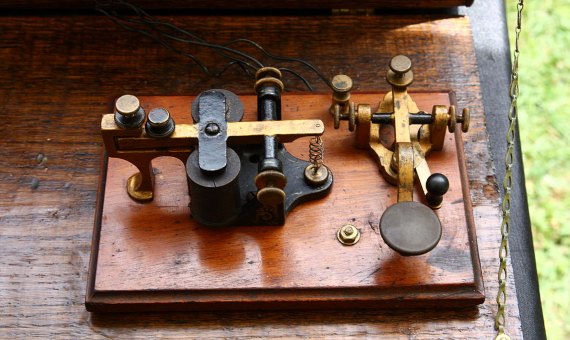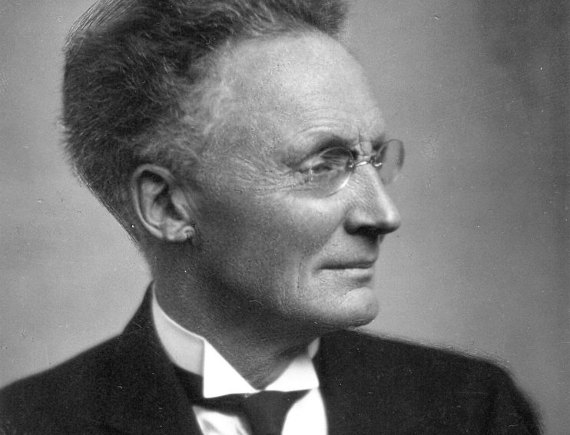Since ancient times, humans have felt the need to record and study the weather in search of patterns in the apparent chaos; especially to anticipate future similar events, whether floods, droughts, storms, frosts or snowfalls. Although astronomers did achieve some of science’s first great successes in predicting the arrival of the Nile’s seasonal floods, the birth of meteorology as a modern science occurred between the 17th and 18th centuries. Several more centuries had to pass for the first truly reliable weather predictions and records to arrive, which occurred in the first half of the twentieth century. And it was thanks to the breakthrough of a protagonist a priori totally unexpected in this story.
The first attempts to predict the meteorological weather by observing, recording and studying the daily conditions date back to the first millennium BC. Around 650 BC it is known that the Babylonians predicted —or at least tried to predict— imminent meteorological changes, based on the shape and appearance of clouds and other optical phenomena in the atmosphere such as halos around the sun or moon. By the 3rd century BC, Chinese astronomers had already developed a meteorological calendar that divided the year into 24 festivals, each dedicated to a different meteorological situation. Also, around 340 BC, Aristotle wrote his philosophical treatise Meteorologica, in which he compiled all the knowledge of the time about atmospheric phenomena and devised theories and gave guidelines for their prediction.
Interactive timeline: Historical weather records
[+] Watch Fullscreen
New measuring instruments and first records
Similar efforts and attempts were repeated over the following centuries. Much time had to pass before scholars understood that a greater knowledge of the atmosphere, its states and its dynamics was necessary to reach the objective. What’s more, this knowledge had to be based on experimental data, for which it was necessary to design new measuring instruments.
This need had already been anticipated by Leonardo da Vinci with his designs for a hygrometer and an anemometer, as well as by Nicolás de Cusa when fashioning the first hygrometer (in the West) to measure the humidity of the atmosphere. These inventions foresaw the flowering of meteorology, already understood as modern science, in the following century with the invention of Galileo Galilei’s thermometer in 1592 and Torricelli’s barometer in 1643.

In the same way, the first records based on these instruments emerged, among which the Medici Network stands out. It was a first attempt to record the temperature on an “international” scale that would, between 1654 and 1670, document the temperature and prevailing meteorological conditions, every four hours, in various Italian localities and neighbouring countries.
The Medici Network was one of the first and most exceptional initiatives in this regard, but not the only one. As new instruments and refinements and improved versions of existing ones emerged —such as the Fahrenheit mercury thermometer, the mercury barometer or the four-cup anemometer from Irish astronomer and physicist Thomas Romney Robinson— more and more meteorological scientists and enthusiasts sought to establish regular weather logs. Benjamin Franklin maintained one from the early 1740s and recorded hurricanes on the U.S. Atlantic coast from the 1770s. John Dalton set up a small network of rain gauges in England to monitor daily rainfall, and Antoine Lavoisier began measuring temperature, humidity, atmospheric pressure and wind speed every day starting in 1763. This latter work would lead him to affirm that it was almost possible to predict the weather one or two days in advance, and that it would soon be possible to publish daily weather reports of great utility to society. His prediction was not misguided, because at the dawn of the nineteenth century some meteorologists began to draw the first primitive weather maps, though of previous days.
The irruption of the telegraph
But as commendable as this work was, these initiatives and efforts were individual and isolated, or at best merely local, which greatly limited the ability to study the dynamics of weather and predict its immediate evolution. There was a need for a broader perspective, encompassing a wider scope, but this need clashed with the impossibility of having such data in real time or, at least, in a sufficiently short period of time.

This could only be overcome with the invention of the telegraph, which connected localities with each other and finally allowed for the immediate communication and transmission of information. In the 1850s, the Paris Observatory set up a data collection network whose main function was to alert the navy of the risk of storms. In the United Kingdom, Robert FitzRoy established the future Meteorological Office. Meanwhile, in the United States, the Smithsonian Institution launched in 1849 a network of weather stations connected telegraphically and sustained with the support of 150 volunteers throughout the country, which constituted the germ of the National Weather Service.
In 1863, French scientist Edme Hyppolyte Marié-Davy published the first modern meteorological maps, with isobars connecting points of equal pressure. That same year, English polymath Francis Galton established how to identify anticyclones and squalls from these maps. In 1875, Galton himself began publishing a daily weather map in The Times newspaper. Shortly before, starting in 1871, in the USA, meteorologist Cleveland Abbe was already telegraphically broadcasting daily weather reports and forecasts for the upcoming days.
The first computerized meteorological report
The definitive advance in meteorological forecasting came from the hand of Norwegian meteorologist Vilhelm Bjerknes, who, with the support of his son, organised a system of weather stations in his country, with the ultimate goal of creating the methods and numerical models of forecasting on which current weather forecasts are based. But the practical application of his system turned out to be utopian due to the complexity of the calculations required, until the introduction of computers allowed these operations to be carried out with sufficient speed to be able to broadcast a useful report. In 1950, American scientist von Neumann prepared the first computerized meteorological report, with the forecast for the next 24 hours.

The last major obstacle to a reliable international historical meteorological record was the disparity in the collection methodology, the instruments used, and even the scales on which the data were recorded, which varied from station to station. There was an urgent need for a unification of criteria and procedures. A first step in this direction was the creation in 1875 of the International Bureau of Weights and Measures, which called on scientists to apply a single system of units in order to facilitate the exchange of information.
The final step was taken when the World Meteorological Organization created the World Weather Records (WWR), a global-scale project to collect meteorological data from hundreds of stations, both those collected since that time and the past records archived at those stations. Therefore, starting in 1927, the WWR, in addition to supporting this network, periodically publishes reports that include monthly and annual data on average atmospheric pressure, average, maximum and minimum temperatures and monthly and annual rainfall throughout the planet.
This is why the meteorological records start in 1927, or at best go back to 1880 from data retrieved and sifted from the earliest meteorological offices and weather stations.
Comments on this publication